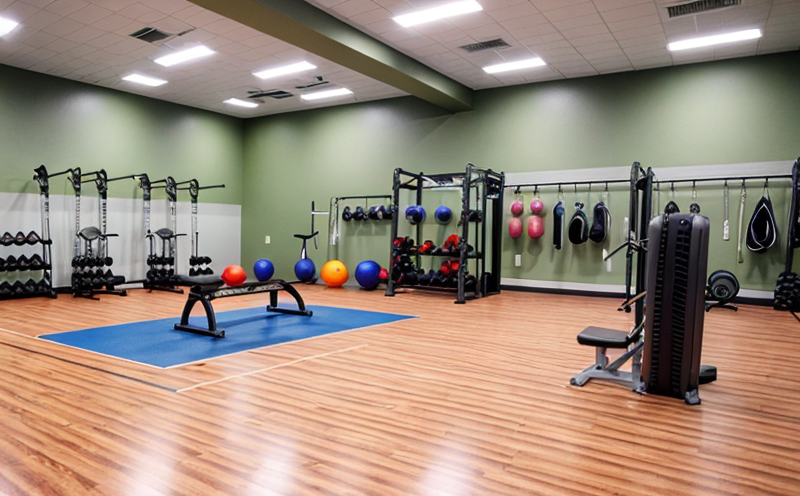Shock Absorption Testing of Protective Gear
The integrity and effectiveness of protective gear in various consumer products are paramount to ensuring user safety. Shock absorption testing is crucial in evaluating how well a piece of equipment can dissipate the impact forces encountered during use, thereby protecting the wearer from potential harm. This service is particularly important for sporting goods and fitness equipment, where users engage in high-impact activities that could otherwise lead to severe injuries.
Shock absorption tests are designed to simulate real-world conditions under which protective gear will be used. For instance, when testing helmets for cycling or skateboarding, the test setup aims to replicate scenarios like a collision with the ground at varying speeds and angles. The goal is to determine whether the helmet can effectively absorb the shock of an impact without transferring excessive force to the head.
The choice of specimen materials directly influences the outcome of these tests. For instance, the shell material composition affects how well it can dissipate energy during a collision. Similarly, liner materials play a critical role in providing additional cushioning and absorbing impacts. Proper specimen preparation involves ensuring that all parts are aligned correctly according to standards such as ASTM F1492 for helmets.
Instrumentation used in shock absorption testing includes impact testers capable of simulating the force exerted during actual use. These machines can be configured to apply controlled impacts at different velocities and angles, allowing for comprehensive evaluation of various aspects of protective gear performance. Data collected from these tests is then analyzed using statistical methods to ensure consistent results across multiple samples.
Reporting on the findings typically includes detailed descriptions of test procedures followed, observed outcomes, and interpretations based on established criteria. Compliance with relevant international standards like ISO 12402 for head protection ensures consistency in reporting practices worldwide.
To summarize, shock absorption testing is an essential component of ensuring high-quality protective gear that provides reliable performance under demanding conditions. By adhering to rigorous testing protocols, manufacturers can enhance user safety while maintaining competitive edge through innovation and quality assurance.
Why It Matters
The importance of shock absorption testing cannot be overstated when it comes to protecting individuals engaged in sports activities or other physically demanding tasks. Properly designed protective gear equipped with effective shock absorbers can make all the difference between minor discomfort and severe injury.
- Ensures Safety: Effective shock absorption reduces the risk of serious injuries by dissipating excess energy away from the wearer's body.
- Promotes Comfort: Well-designed protective gear that absorbs shocks efficiently enhances user comfort, making prolonged use more enjoyable and less stressful.
Incorporating this testing into product development processes helps manufacturers identify potential weaknesses early on, allowing for necessary modifications before products reach the market. This approach not only improves overall safety but also fosters innovation by encouraging continuous improvement based on empirical data rather than assumptions alone.
Moreover, compliance with international standards demonstrates a commitment to quality and reliability, which can significantly enhance brand reputation among consumers who prioritize safety above all else.
International Acceptance and Recognition
- American Society for Testing and Materials (ASTM): ASTM F1492-08(2017) specifies requirements for bicycle helmets, covering impact performance as part of its overall evaluation process.
- International Organization for Standardization (ISO): ISO 12402 series covers various aspects related to head protection devices, including shock absorption characteristics among others.
- European Committee for Standardization (CEN): CEN standards like EN 397 provide specific guidance on personal protective equipment used in different industries.
- International Electrotechnical Commission (IEC): While primarily focused on electrical safety, certain IEC standards may overlap with shock absorption principles applicable to electronic components incorporated into some types of protective gear.
The widespread adoption and implementation of these international standards underscore their significance in promoting consistent quality across borders. Compliance with such recognized frameworks ensures that products meet industry benchmarks, thereby gaining broader acceptance globally.
Competitive Advantage and Market Impact
- Innovation Leadership: By excelling at shock absorption testing, companies can differentiate themselves by offering superior protection against impacts. This competitive edge attracts more discerning customers willing to pay premium prices for added security.
- Regulatory Compliance: Meeting stringent international standards enhances regulatory compliance, reducing the likelihood of recalls and associated costs. It also builds trust among consumers regarding product safety.
- Brand Reputation: Consistently delivering high-quality protective gear backed by robust testing practices strengthens brand loyalty and market share.
By leveraging advanced shock absorption technologies in their products, manufacturers position themselves as leaders within the industry. This strategic approach not only secures current demand but also opens up new opportunities for growth through expanded product lines tailored to meet evolving consumer needs.





